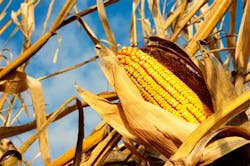Near infrared spectroscopy determines the hardness of corn grains
A near infrared (NIR) spectroscopy imaging technique can determine the hardness of corn grains without destroying them. The new technique could offer food processors savings in time and money compared to other methods for determining grain hardness.
"The advantages of imaging using NIR are substantial and include low cost per sample, more rapid analysis and the ability to operate in a number of in-field or on-line environments," explains senior Marena Manley, professor in food science at Stellenbosch University (Stellenbosch, South Africa).
Corn is an internationally important food crop, but for many food uses the kernel needs to have a specific hardness. For example, food products such as corn flakes and meal require a comparatively hard kernel; kernels that are too soft can result in huge losses for a food processor.
Current methods for determining hardness destroy the samples, making them costly and time-consuming. In a paper just published in a special issue of the Journal of Near Infrared Spectroscopy, Manley and her co-author Cushla McGoverin report that a novel analytical imaging technique called NIR hyperspectral imaging (NIR-HSI) offers a non-destructive way to measure the hardness of corn kernels.
The kernel is made up of different parts of which the largest, the endosperm, can be hard or soft, and it is well known that the proportions of the different types of endosperm give an indication of the overall hardness of the kernel.
In the paper, McGoverin and Manley show that NIR-HSI can be used to measure the proportions of these different types of endosperm, and that these proportions are directly related to kernel hardness. This potentially holds advantages for the corn milling industry, as NIR-HSI can measure the hardness of kernels in moving samples in just a few seconds.
"Irrespective of whether the large germ of the kernels was facing towards or away from the NIR camera, the endosperm ratios could be predicted at an acceptable accuracy," says McGoverin.
Manley and McGoverin's paper is just one of 11 papers in the current, special issue of JNIRS -- Journal of Near Infrared Spectroscopy dedicated to NIR imaging.
More information can be found here.
Recent articles on spectroscopy from Vision Systems Design that you might also find of interest.
1. Spectroscopy aids brain tumor detection
UK researchers have shown that infrared and Raman spectroscopy - coupled with statistical analysis - can be used to differentiate between normal brain tissue and different tumor types.
2. Spectroscopy detects explosives over long distances
Researchers at the Vienna University of Technology (Vienna, Austria) have developed a system to detect chemicals inside a container over a distance of more than a hundred meters.
-- Dave Wilson, Senior Editor, Vision Systems Design
